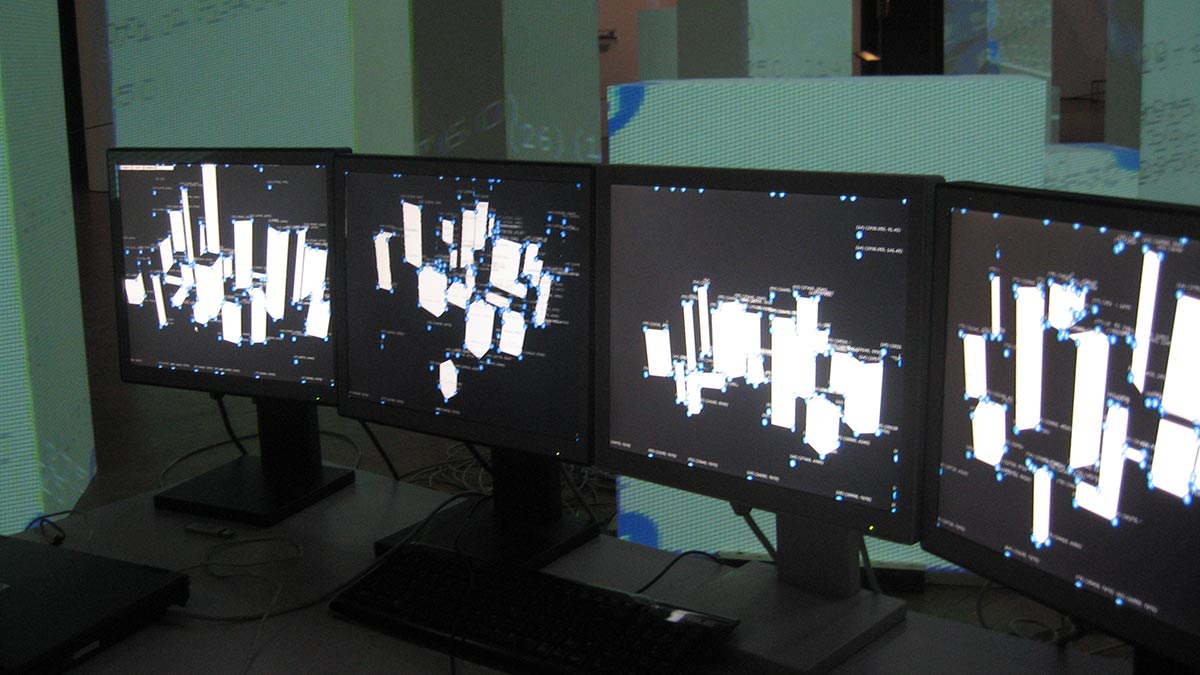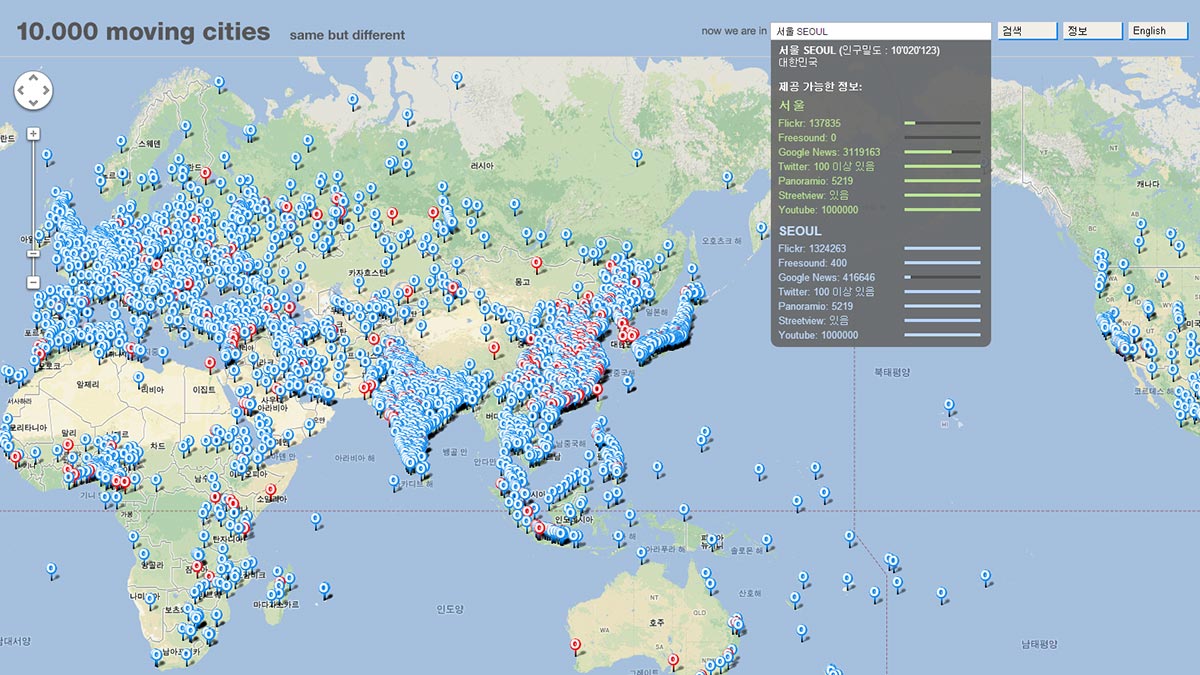Initial thoughts of the installation:
Entering the space where the exhibition was taking place, I was greeted with the sight of what I thought was coffee tables, with the audience occupying the seats and due to the limited seats, many viewers stood around as the live performance unfolded. I was perplexed by the setup, as I went in with little knowledge of what was about to take place. Random, loud noises could be heard at the installation and shortly after, performers accompanied the ‘chaos’ of the noise that filled the environment. The nonchalant performers dawned on a large mask/head set that impeded his vision. It was only later, after reading up on the artist and his thought process of creating such a niche field of art in media that I understood slightly better.
Set up:
The setting inhibited from ‘Disappearance, bar in the gallery’ by Lee Kang So in 1973 involves the display of Korean tables and benches placed in the gallery, as if to re-enact the scene of a Korean bar which involves distant chatter, laughter and shared experiences from daily struggles and accomplishments delivered through conversations. The presence of physical ‘history’, which included alcohol stains, dents and burn marks from cigarettes of the dine-in tables was missing, suggesting that the artist was moving away from the focus of reminiscence and the lingering effects of a location. More evidently, we could see that the artist manages to use the benches and tables not only as props but incorporating them to become an essential element of the exhibition. The bar serves as a place of socialization, a perfect scene for the artist to deliver his message across to his audience. As we continue to unravel the artist’s intention and art direction, we may find that the relevance of location played a crucial role in helping the artist express his thoughts through Life circuit.

Life circuit- concept:
Urich Lau, the artist in question takes on a tangible and performative approach to his artworks. His intention was to create a circuit – which consists of an input and output – between his audience and him through the introduction of an alternate space in which he navigates and ‘interacts’ with his surroundings. While being ‘impeded’ by sight and hearing, one questions whether this is really the case – he is somewhat able to weave through and make his way around by live feed and audio-visual information.
Communication and exchange with the art seems to manifest in a bizarre manner – the layering of ideas that the artist has constantly engaged in his artistic oeuvre where he addresses issues of surveillance and viewer participation(non-participation in this case). The presence of the viewer automatically translates into participation as he connects with them through the medium of his alternate reality – he projects live visuals of the viewers without their permission, which I believe is his way of communicating the lack-thereof privacy and discomfort in being under surveillance.
Critique on Singapore’s art scene – Life Circuit touches on the issues pertaining to the contemporary art and heritage in Singapore’s context. He occasionally flashes the National Art Council(NAC)’s mission statement, which baffled many of us who sat in for the performance work. However, it was not difficult to tell that the artist meant for viewers to question about it relevance and thus understanding the intention of the artist. To us it might have meant nothing, the seemingly abstract display of text actually delivers a strong message – to encourage us to challenge our perception on creating art in Singapore’s context and discovering how much or little we are able to exert our creativeness. Are we then restrained by the boundaries set by council that we are unable to seek a certain direction in art?
To champion the creation and appreciation of the arts as an integral part of our lives.
Commentary on the embrace of technology – we live in an era where mobile phones and social media become far more than simply communication. It is intertwined with entertainment, many of us are so used to this form of entertainment that we become indifferent to it. We are consumed by the visuals and accessibility provided by social media, as we slowly stray away from the need to have real, physical interaction that require effort and time. I asked myself this: in light of the 21st century, why did Lau’s Life circuit gadgets look old-school? He uses basic ear muffs, a gas-mask looking device and small projectors that replace his eye function. In this day an age, was it really necessary to attach the over-the-top amount of wires instead of using wi-fi and bluetooth to make his ‘helmet’ look cleaner?
In hindsight, that may be the whole point – to allow us to see the raw nature of technology – the amass of wires that leaves us wondering whether technology we integrate into our lives actually serves to benefit us or weigh us down.




